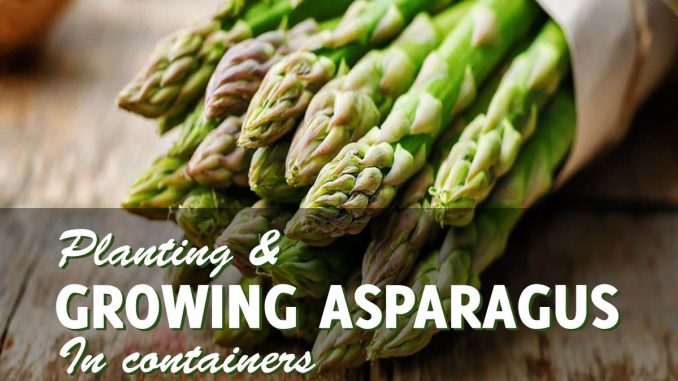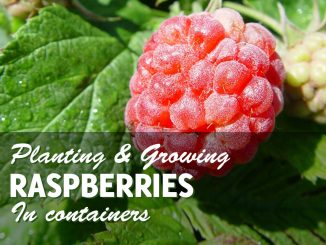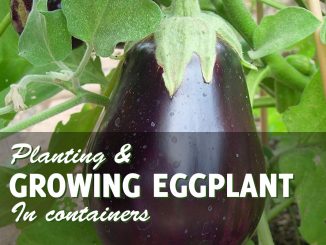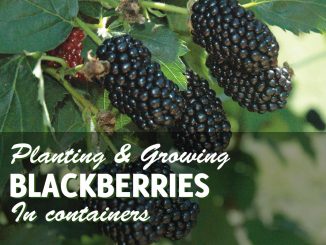
It’s amazing how asparagus is hated as a kid and loved as an adult. This vegetable is a perennial plant that produces edible stems. It is one of the most expensive products in the market as it takes years to cultivate before it gets to the harvesting stage. If you have the patience, we will show you how to grow asparagus in containers so you can have your own yield that has better flavor.
Before You Get Started Growing Asparagus in Containers
Choose how you will do your cultivation when you are attempting to grow asparagus in containers. You can either choose to grow your crops indoors or outdoors as long as you have space. Asparagus can also be grown from seeds or from crowns. Growing asparagus from seeds will take much longer compared to crowns.
Asparagus needs a lot of sun to grow. If you are planning on growing them indoors, you will need a lot of artificial lighting to supplement the sun, especially during the winter. It is important to sow your seeds or asparagus around late March to April when the temperature is 64F. If you chose to grow asparagus outdoors, make sure that they are in a place where they can get at least 8 hours of full sun.
Choosing the Right Container to Grow Asparagus
When growing asparagus in containers, the size of the pots really matters. Asparagus plants need a lot of room for their roots, and this can be very limited in pots. This will limit your crops to one plant per container. Putting in more than one will only crowd the plants resulting in poor health and root disease.
You need a pot that is at least 20 inches deep and 20 inches in diameter. You can have a container that is made up of terra cotta or plastic. Most gardeners prefer plastic or polyethylene pots because they do not easily break and comes cheaper than terra cotta pots. What’s more, they hold in moisture better when the weather becomes warm and dry. These attractive whiskey barrel planters are made of resin and work great. If you are looking to grow more than a single asparagus plant then you should look into a larger planter like this 22.4 gallon raised planter; or if you really want a massive crop then look into something like this cedar raised bed kit!
You need to drill several holes on the bottom of the container for better drainage. Add in an additional medium-sized hole at the left and right side of the container. Actually, it does not matter where as long as you have holes on opposite sides of the container. Line the bottom of your container with gravel, small pieces of broken terra cotta pots, or fiberglass nettings to help drain the soil and keep out pests.
Preparing Your Soil or Potting Mix for Asparagus in Containers
To give yourself the best chance, prepare a decent potting mix when learning how to grow asparagus in pots. Garden soil is not advised as it contains many dormant weed seeds that can affect your crops. It also contains bacteria that can harm your crop that can leave all your efforts useless.
Purchase a garden mix in your local garden store. It usually contains sterile soil mixed with peat moss, compost, perlite, or vermiculite. This mix holds moisture perfectly during the dry season. You need to have your mix in a pH range of 6.5 to 7.5. Adjust the pH with the use of lime to raise the pH or with sulfur to lower the level. Purchase those compounds in your garden store and follow the package instructions. Incorporate a good amount of fertilizer into your soil. Compost is very much preferred as it is safer for your crops and even cheaper to produce.
Germinating Asparagus Seeds
When you are growing asparagus in containers from seeds, you need to remember that it will take about a year for your seeds to grow to an established plant. Sow in your seeds around mid-April as the temperature is high enough to raise the temperature of the soil to start the germination process. Finding seeds is normally as simple as taking a trip to your local garden center, however if for some reason you are having trouble finding them locally then you can also purchase seeds online.
To give your seeds a head start, prepare your seeds as early as February to prepare them for planting. Get several paper towels and spray them with a spray bottle until they are damp but not dripping wet. Sprout twice the amount of seeds that you think you will need since asparagus tend to have a poor germination rate. (Keep in mind that only one plant is allowed per container.)
Place them inside a Ziploc bag and seal before putting it on top of your fridge. The fridge acts as a warmer for the seeds. Germination usually happens within 10-14 days afterward.
Plant one sprout ½ inch deep in a pot and water well. If you are sowing the seeds indoors, place your plant by the windowsill or under an artificial light source. Choose an area that is warm and free from drafts with a temperature of 77F
Grow Asparagus in Containers From Crowns
Planting asparagus from crowns will lessen the harvesting period to one year when growing asparagus in pots. If you cannot find any live asparagus to purchase locally, there is a great selection of asparagus available online. I purchased these two year old Mary Washington crowns on Amazon and they grew great!
Dig a hole 8 inches deep and 18 inches wide diagonally. Make sure you produce a mound of compost at the center to cradle the roots of your asparagus. Spread the roots evenly around the mound and cover your crown with just 2 inches of soil, leaving a small cavity behind. Leave the cavity hollow until the shoots start to appear. As the shoots grow, fill the hole gradually, leaving a little tip of the shoots exposed. Eventually, the shoots will come to the level of the soil, and you can now fill the hole completely.
Care for Asparagus Grown in Containers
Watering
Keep your asparagus healthy by keeping the ground moist but not wet. Overwatering while growing asparagus in containers will cause root rot that can kill your plant.
Fertilizing
You can give them 0-20 organic liquid fertilizers according to package instructions or choose compost for an organically grown asparagus. Side-dress with a good amount of compost manure once every month or give your asparagus a dose of compost tea every two weeks.
Pests & Disease
Beetles can be a problem when caring for asparagus. You can spray them with pyrethrum or maintain an organic crop by handpicking them and removing the eggs that stick to the spears. Another natural option is neem oil. Always inspect your plants and clear out any debris left out from harvesting and tilling the soil to get them out.
Violet root rot happens when your asparagus leaves turn yellow, and there is a purple mold covering your asparagus roots. Sadly, there is no cure for this condition. You need to destroy the affected crop and use a new potting mixture for growing a new one.
Harvesting Asparagus in Containers
Harvesting can take up to 3 years or more. Your plant will deteriorate in yield and health if you harvest too early. Once your asparagus produces spears in the first year, let them produce bushy stems. If they produce berries, pick them off and let the fern stems die. Cut the asparagus to ground level in the month of October and continue to care for your asparagus for another year. This process is repeated if you have started your asparagus from crowns.
In the second year of growing asparagus in pots rake the soil and give your asparagus a small amount of fertilizer in the early part of spring. Always make sure to keep weeds at bay by tilling the soil and pulling out weeds that manage to grow. It would be best to mulch your asparagus with compost to keep it nourished as well as to protect them from weeds. Still, do not harvest your spears and repeat the process for the first year.
The 3rd or last year is the most trying year when growing asparagus in pots. You are now able to harvest spears, but you must leave most of them behind to produce ferns. This will help your plant harden off by letting it build up strength to produce even more spears for the next year.
Once you reach year four of growing asparagus in containers, you can now harvest as much as you want! When you grow asparagus in containers it will continue to produce year after year. You may even have to cut spears every year just to keep them from growing ferns!
You can harvest the spears when they are around 5 inches high. A sharp knife must be used to cut the stems 3 inches beneath the soil level. Let your crops rest in the middle of June and let the stems produce ferns. This will again help your asparagus replenish itself to give you a bountiful harvest next year.
Looking for more things that you can grow that doesn’t take three-four years before you can harvest? Check out our guide on growing artichokes in pots!





Be the first to comment